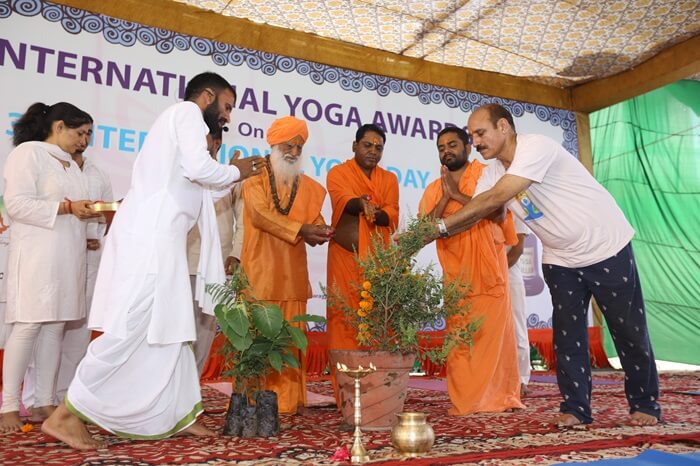The Role of Prana in Yoga and Breathing
“All that exists in the three heavens rests in the control of Prana. As a mother her children, oh Prana, protect us and give us splendor and wisdom.” ~ Prashna Upanishad II.13
Life is a continuous cycle made up of countless smaller cycles. Breathing is a crucial part of this life cycle. Each breath we take is a cycle that fills our lungs with air, removes toxins from our body, supplies oxygen to our bloodstream, and supports metabolic processes. Breathing is a fundamental building block of every life activity.
Inhalation and exhalation together constitute breathing, but they are part of a broader system of energy known as Prana. Prana is the vital life force that regulates body temperature, circulates blood, aids digestion, and eliminates waste. It is the essence of life, infusing every part of the universe and vitalizing the body and mind.
According to the sages of the Upanishads, focusing on the breath through yoga connects us with Prana. This connection enables the body to perform yoga postures and the mind to concentrate. Practicing yoga helps direct Prana, leading the mind to a state of clarity and enlightenment.
The Five Main Prana Vayus
In yoga, Prana is divided into different “vayus,” or winds, each of which moves through the body in distinct ways. Proper functioning of these vayus helps individuals realize their fullest potential.
Apana Vayu: This vayu moves downward and outward, aiding in elimination. It is associated with the menstrual cycle and childbirth. A balanced Apana Vayu ensures healthy elimination and psychological stability, while a blockage can lead to negativity and instability.
- How to Breathe: Inhale through the nose and direct the breath to the base of the spine. Exhale and feel the breath move downward to the legs and feet.
- Asanas: Practice standing yoga poses, seated forward folds, and seated twists to support robust elimination.
Samana Vayu: This vayu governs digestion and the assimilation of information. Blockages can lead to digestive issues and difficulties in rational thinking.
- How to Breathe: Inhale, allowing the breath to expand the belly and move evenly through the front and sides of the torso. Exhale slowly.
- Asanas: Include standing, seated, and supine twists, as well as arm balances and forward folds, to harmonize Samana Vayu.
Prana Vayu: The fundamental vayu, Prana Vayu governs inhalation and ingestion. It supports the senses and mental peace. Exposure to negativity can weaken this vayu.
- How to Breathe: Inhale through the nose, filling your lungs. Exhale, letting the breath move through the lining of the lungs.
- Asanas: Engage in backbends, Savasana, Utkatasana, and Tadasana.
Udana Vayu: Associated with upward movement, Udana Vayu influences growth and overcoming personal limitations. A weaker Udana Vayu may result in stagnation, while excess can lead to arrogance.
- How to Breathe: Visualize the Prana moving up from the base of the spine to the chest. Exhale, allowing the energy to move upward through the top of the head.
- Asanas: Practice backbends, particularly those on the belly, inversions, and Virabhadrasana I.
Vyana Vayu: This vayu moves outward from the center, representing overall circulation and vitality. It supports the functions of the other vayus and facilitates the free flow of emotions and thoughts.
- How to Breathe: Direct the breath from the nose to the heart and back, then out through the arms, torso, and legs.
- Asanas: Perform Sun Salutations, backbends, side-bending postures, and Savasana.
These five vayus contribute to the unity of body, mind, and soul, enhancing overall well-being.
For a deeper understanding of these yoga practices and how they integrate with Prana, explore our Yoga Teacher Training in India programs.
Conclusion
Understanding and harnessing the power of Prana through yoga can profoundly impact your physical and mental well-being. By focusing on the five main Prana Vayus—Apana, Samana, Prana, Udana, and Vyana—you can enhance your practice and achieve a greater sense of balance and vitality. Explore our Yoga Teacher Training in India and Ayurveda Retreat in India to delve deeper into these practices and elevate your journey towards holistic health. Visit our homepage for more information on our offerings and how you can begin your transformative experience.















